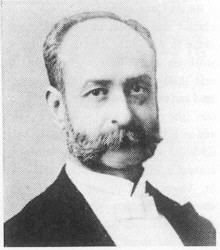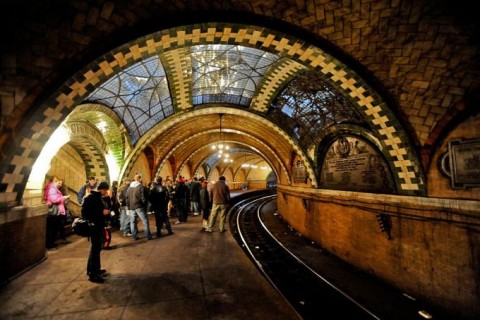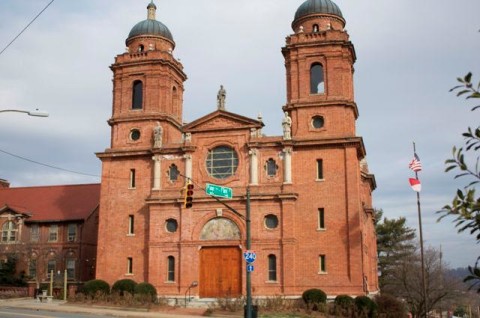The Valencian Architect and Constructor Who Built (Quite a Bit of) New York
Rafael Guastavino is not terribly well known in his native Valencia. He is however much appreciated in the city he helped to build; New York, New York.
In the news because his house has been bought and saved from demolition by a Republican candidate for Mayor of New York, Valencia International reviews the career of this great Valencian.
In 1885 a Valencian builder from Godella, Rafael Guastavino, patented the Tile Arch System, which permitted the construction of self-supporting arches and vaults held together by interlocking terracotta tiles and mortar.
Guastavino was also an architect in his own right, but he is more important for his patented tiling system which appears in a huge number of architecturally important and famous buildings such as hotels or railway staions that require large vaulted spaces.
He arrived in New York City in 1881 at the age of 40 with his nine year old son. In Spain he’d been an accomplished architect trained in Barcelona and a contemporary of Antoni Gaudí.
Guastavino wanted to emigrate to America after architectural plans he submitted to the Philadelphia Centennial Exposition earned him a medal of merit in 1876. He believed he could acquire better building materials and more job opportunities there, although at first, he had trouble finding work. His techniques were not well understood in America straightaway.
Literally hundreds of major building projects incorporate the distinctive Tile Arch System. In Chicago, the central nave vaulting of Rockefeller Chapel at the University of Chicago used 100,000 Guastavino tiles. In Boston Guastavino tiles are to be found in the Boston Public Library; in New York, in Grand Central Terminal, Grant’s Tomb, Carnegie Hall, the U.S. Supreme Court building, the American Museum of Natural History on Central Park West, Congregation Emanu-El of New York and St. Bartolomew’s Episcopal Church on Park Avenue.
Guastavino tiles form the domes of St. Francis de Sales Roman Catholic Church (Philadelphia), and in Union Station (Pittsburgh), the vaulting of the carriage turnaround is a Guastavino tile system.
In Nebraska they can be seen in the Nebraska State Capitol.
The tiles of the Guastavino Fireproof Construction Company were fireproof, laminated tiles used for wide arches that created a unique vaulted spatial effect. His fire-resistant construction method was a major selling point, bearing in mind that a great fire had ravaged Chicago in 1871.
The Guastavinos specialized in constructing self-supporting tile arches that were light, strong, fireproof and economical. Their beautiful thin-shell ceiling tiles grace numerous buildings.
A walking tour of New York’s Upper West Side reveals many of Guastavino’s works, including the tiles in the Holy Trinity Church, the vehicular entrance to the American Museum of Natural History on Central Park West, and the porte-cochere at the Ansonia. Outside the Upper West Side, other Guastavino works include St. Paul’s Chapel on the Columbia University campus, the Cathedral of St. John the Divine, the Western Union Building on Hudson Street, the City Hall subway station, the Grand Central’s Oyster Bar, the Church of Notre Dame, the Federal Reserve Bank, the U.S. Custom House, the Plaza and St. Regis hotels, the Bronx Zoo, Temple Emanu-El, Lenox Hill Hospital, the Cloisters, St. Bartholomew’s and St. Vincent Ferrer (the patron saint of Valencia) churches, and the Municipal Building. Many of these structures are among the most famous and distinctive in the country.
In 1900, New York architects Heins & LaFarge hired Guastavino to help create City Hall station, the underground showpiece for the IRT, the first part of the emerging New York City underground. The station closed in 1945 and thereafter became a legendary Manhattan underground relic, a must for fans of urban legends.
Having experienced Ellis Island as an incoming immigrant, in 1917 the younger Guastavino was commissioned to rebuild the ceiling of the Ellis Island Great Hall. The Guastavinos set 28,832 tiles into a self-supporting interlocking 17 metre high ceiling grid so strong that during the restoration project of the 1980s only 17 tiles needed replacing.
Much of Guastavino’s output can be found in the north-eastern United States, including 360 works in New York, 100 in Boston, 30 in Pittsburgh, and 20 in Philadelphia. Examples of his work also can be found in ten other countries.
Guastavino’s distinctive architectural stamp is also a strong presence in North Carolina. After working on a commission at the Biltmore Estate, Guastavino discovered the beauties of Piedmont North Carolina and retired to Black Mountain. Along with the St. Lawrence church, the Biltmore House, and the Duke Chapel, famous sites include the Jefferson Standard Building in Greensboro, the Motley Memorial in Chapel Hill and St. Mary’s Catholic Church in Wilmington. But it is the St. Lawrence church that remains perhaps the best-known structure in that state. He is buried in its crypt, which he designed in 1905.
Guastavino had decided to work on the church after he tried attending services one morning and was turned away because it was too crowded. He offered his services to help build a much larger church. Construction began in 1905 but was unfinished when Guastavino died in 1908. His son finished the project.
Few structures designed and built by Guastavino alone have been identified. He was responsible for a series of houses with unusual Moresque features on West 78th Street 121-131 (known as the ‘red and whites’), in Manhattan’s Upper West Side, which survive. His son Rafael’s Mediterranean villa (1912) built entirely of Guastavino tiles, which the company manufactured itself at its factory in Woburn, Massachusetts, still stands on Awixa Avenue, Bay Shore, Long Island.
The records and drawings of the Guastavino Fireproof Construction Company are held by the Department of Drawings & Archives in the Avery Architectural and Fine Arts Library at Columbia University in New York City.
In all, by 1891 the company created with his son, Rafael Guastavino Jr. (1872-1950) had offices in New York, Boston, Milwaukee, Chicago, and Providence, Rhode Island. They would eventually hold 24 patents. Their company, Guastavino Fireproof Construction Company was incorporated in 1889 and executed its final contract in 1962.
Eventually, steel and concrete building methods were deemed more practical than Catalan vaulting, and the firm went out of business in 1962. While Guastavino’s techniques produced greater beauty, they could not compete with newer, cheaper building techniques.
So influential were the Guastavinos that one of the city of the skyscrapers’ most prestigious restaurants today bears their name and their characteristic soaring vaults.
‘Guastavino’s’, an architectural masterpiece and a designated New York City interior landmark, hosts banquets, weddings, cocktail receptions, and corporate events.
With its soaring granite arches and vaulted tiled ceiling, it is situated under the 59th Street Bridge (the title itself of a famous song by Simon and Garfunkle, subtitled ‘Feeling Groovy’)


